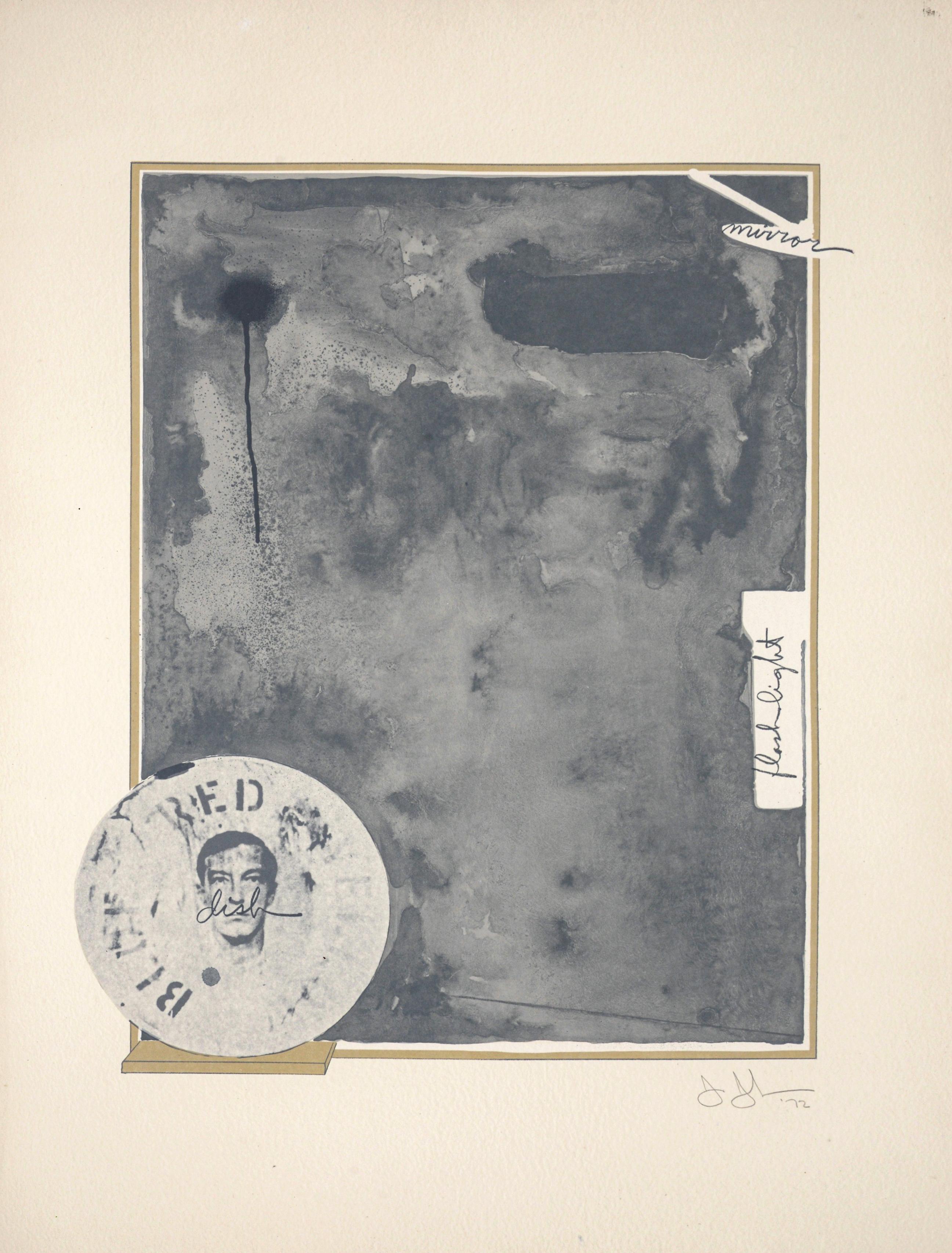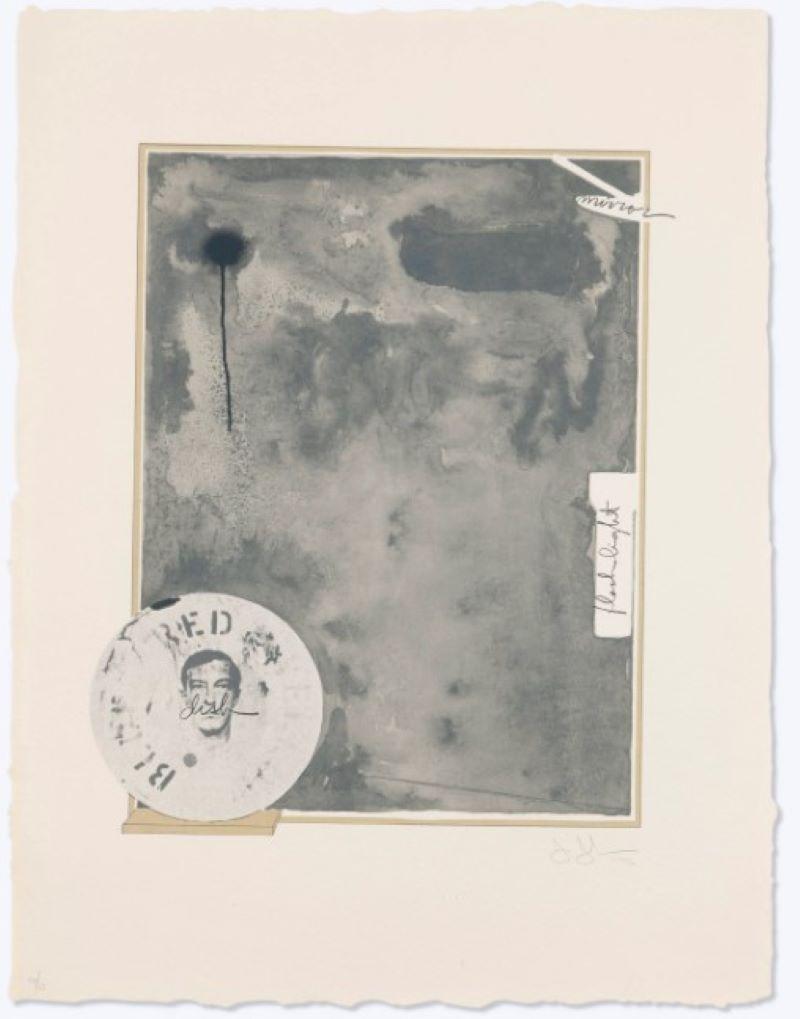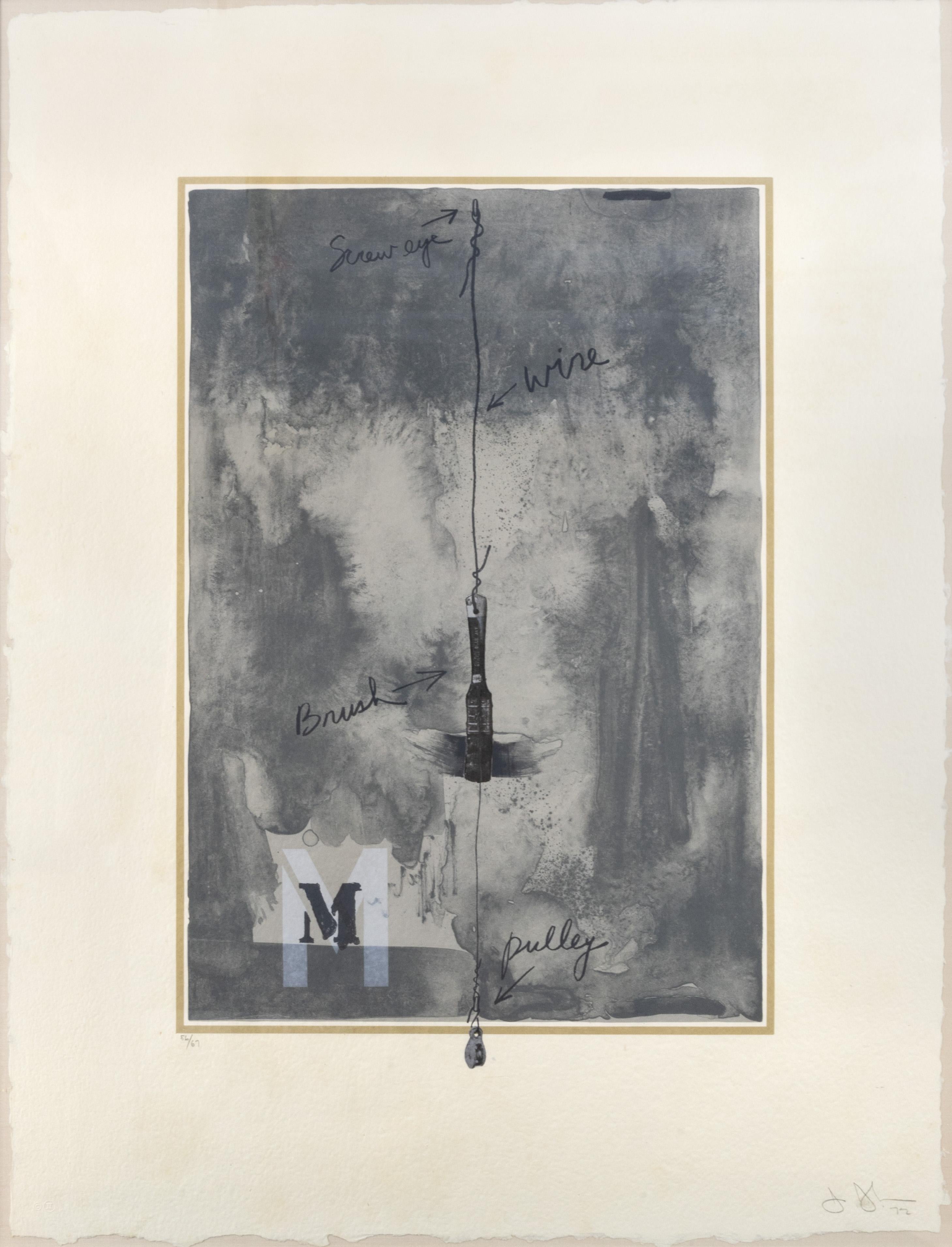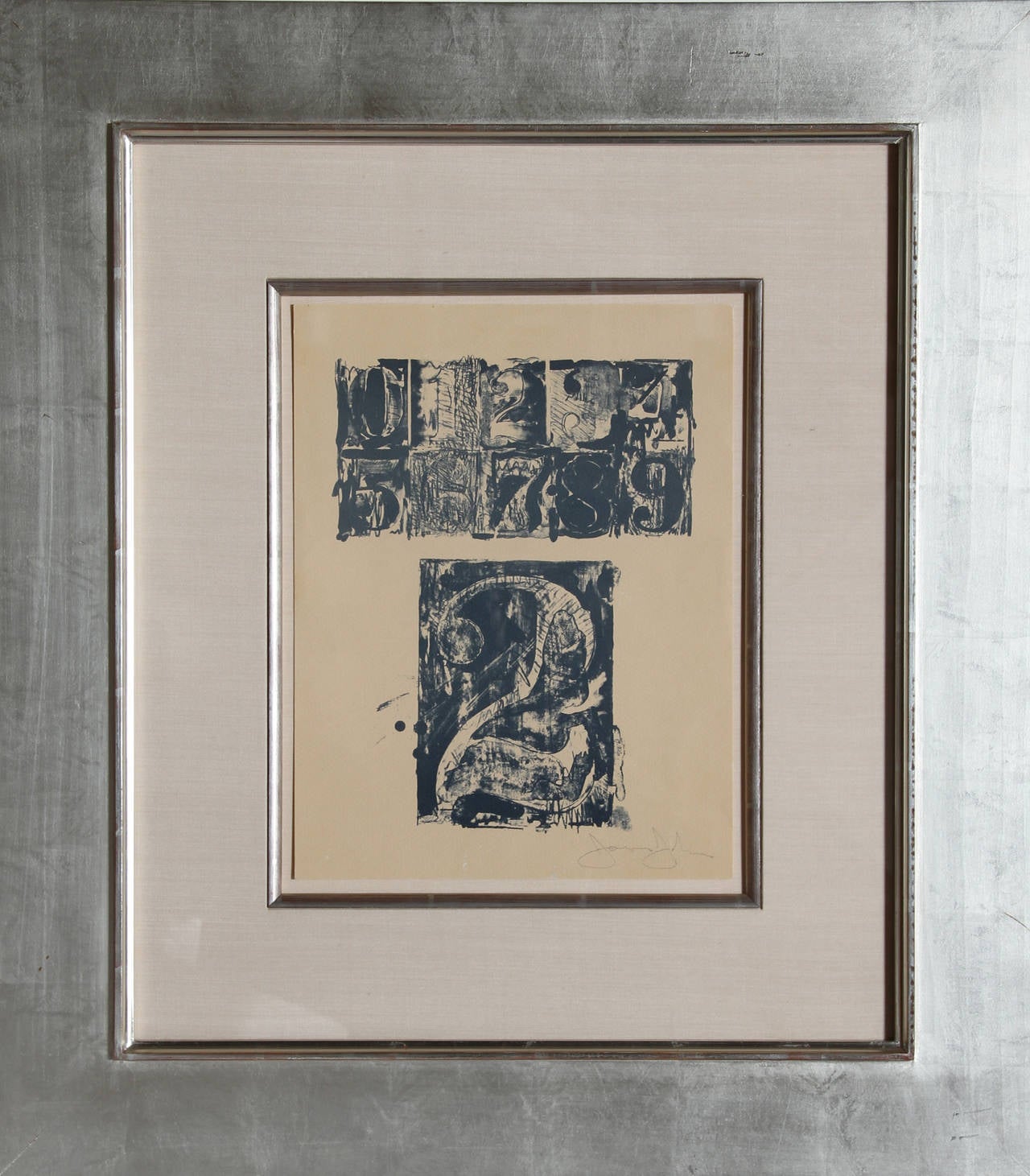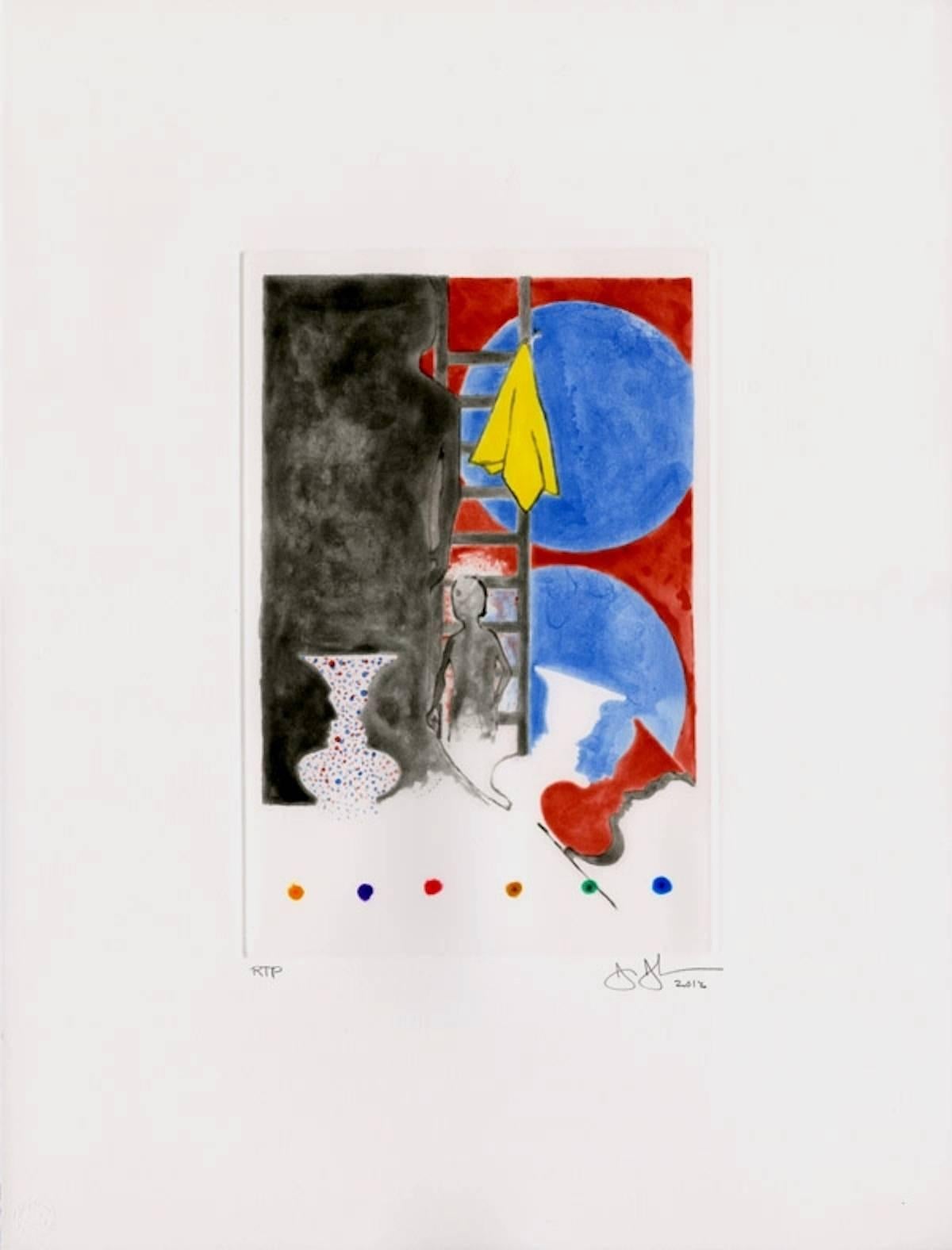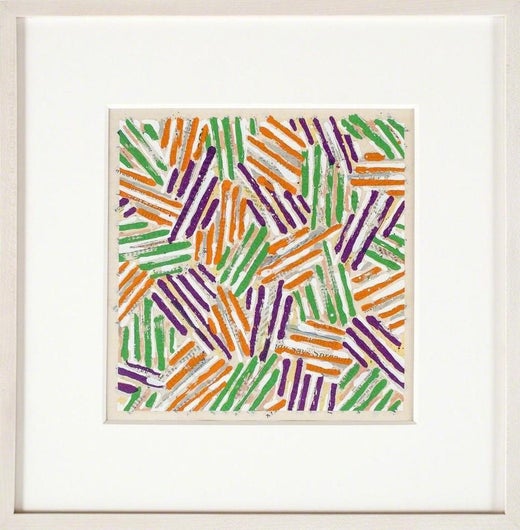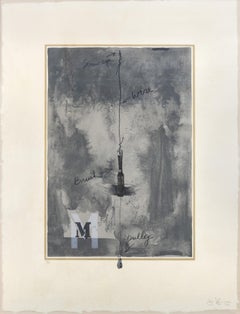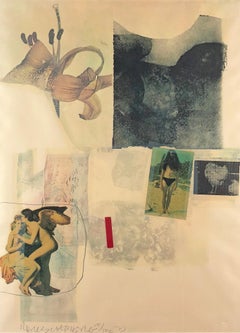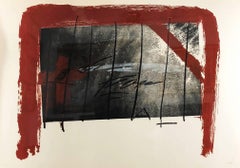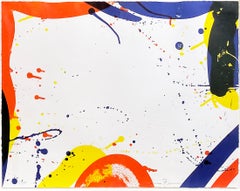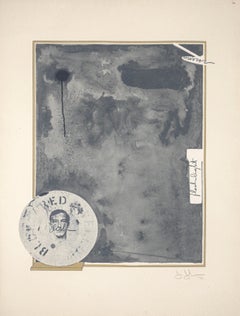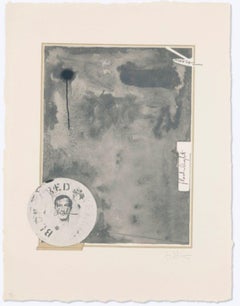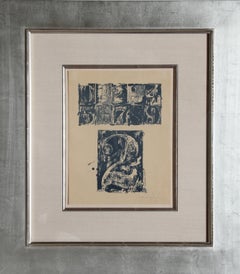Video Loading
Want more images or videos?
Request additional images or videos from the seller
1 of 11
Jasper JohnsSouvenir I1972
1972
$15,000
£11,639.87
€13,142.18
CA$21,463.61
A$23,420.70
CHF 12,117.13
MX$280,182.02
NOK 153,068.31
SEK 143,728.75
DKK 98,148.72
About the Item
Jasper Johns (American, b. 1930)
Souvenir I, 1972
Lithograph in Colors on Angoumois a la Main Paper
Hand-signed Lower Right
Numbered 20/63 and Stamped Lower Left
38.5 x 29.5 inches
39.25 x 30.25 inches with frame
Painter, sculptor, and printmaker Jasper Johns became one of America's best-known post-Abstract Expressionists and Minimalists. His name is most associated with pictorial images of flags and numbers, Pop-Art subjects that he depicted in Minimalist style with emphasis on linearity, repetition, and symmetry. Johns completed his first flag painting in 1955, alphabet subjects in 1956, sculpture in 1958, and lithographs in 1960.
Unlike Abstract Expressionism, these signature works seem removed from the artist's emotions. They are modernist in that they lack traditional perspective, focusing on inter-relationships of color and shapes, but are realist in that they have recognizable subject matter.
Born in Augusta, Georgia, Johns grew up in South Carolina, with no formal art training but did attend the University of South Carolina for two years. In 1949 he moved to New York City but was drafted into the Army. Returning to New York, he began experimenting with styles, and "Flag", dated 1955, earned him his first major attention. It was revolutionary in that it was simply a geometric design on a large canvas, divorced from emotional or political connotation.
His flag paintings are credited as key in the development of Minimal Art in that the focus of these pieces was their linearity and uniformity with de-emphasis on the unique creative talents of the artist. For Johns, major influences on this Minimalist style were his friendships with dancer Merce Cunningham, composer John Cage, and artist Robert Rauschenberg.
Over the next few years, Johns used the same approach with other images that were traditional symbols. In 1956 to 1957, he added numbers to his paintings; in 1958, he did his first sculpture of mundane objects; and in 1960, he executed his first lithographs.
In 1959, his work became increasingly abstract, influenced by Surrealism and Dadaism, with surfaces complicated by combining bold colors with letters and other symbols, some of them obvious such as maps and others hard to read. He created assemblage, and from 1972, used a cross-hatching method.
In 1997, a major retrospective of 225 of Johns' work was held in New York at the Museum of Modern Art, organized by Kirk Varnedoe. Following this, he began a new series that was much more muted, mysterious, and serene than his earlier work. The exhibition of these paintings debuted on September 15, 1999 at the San Francisco Museum of Modern Art and traveled to the Yale University Art Gallery in January 2000 and then to the Dallas Museum of Art.
In the late 1990s, Johns has been working from a restored barn near Sharon, Connecticut and pursues a hobby of raising bees.
- Creator:Jasper Johns (1930, American)
- Creation Year:1972
- Dimensions:Height: 38.5 in (97.79 cm)Width: 29.5 in (74.93 cm)
- Medium:
- Movement & Style:
- Period:
- Condition:
- Gallery Location:Missouri, MO
- Reference Number:1stDibs: LU747315584052
Jasper Johns
Jasper Johns is an American painter, sculptor and printmaker born on May 15, 1930. He eventually became one of America's best known post–Abstract Expressionists and Minimalists.
Johns's name is most often associated with pictorial images of flags and numbers and Pop art subjects that he depicted in Minimalist style with an emphasis on linearity, repetition and symmetry. He completed his first flag painting in 1955, alphabet subjects in 1956, sculpture in 1958 and lithographs in 1960.
Find original Jasper Johns art on 1stDibs.
About the Seller
5.0
Vetted Professional Seller
Every seller passes strict standards for authenticity and reliability
Established in 1970
1stDibs seller since 2017
156 sales on 1stDibs
Typical response time: Several days
- ShippingRetrieving quote...Shipping from: Missouri, MO
- Return Policy
More From This Seller
View AllM (ULAE 113)
By Jasper Johns
Located in Missouri, MO
M (ULAE 113), 1972
Jasper Johns (American, b. 1930)
Lithograph in Colors on Angoumois a la Main Paper
Hand Signed and Dated Lower Right
Numbered 56/67 Lower Left
38.5 x 29 inches
39....
Category
1970s Minimalist Abstract Prints
Materials
Paper, Lithograph
Untitled
By Robert Rauschenberg
Located in Missouri, MO
Robert Rauschenberg
"Untitled" 1973
Medium: Screenprint and collage in colors
Printed and Published by Styria Studios, New York and with their blindstamp
Signed and Numbered 71/100
Images Size: approx. 28 x 20 inches
Framed Size: approx. 34 x 26 inches
Born with the name Milton Rauschenberg in Port Arthur, Texas, Robert Rauschenberg became one of the major artists of his generation and is credited along with Jasper Johns of breaking the stronghold of Abstract Expressionism*.
Rauschenberg was known for assemblage*, conceptualist methods, printmaking, and willingness to experiment with non-artistic materials--all innovations that anticipated later movements such as Pop Art*, Conceptualism*, and Minimalism*.
In May, 1999, ARTNews magazine featured him as one of the top twenty-five influential western artists, stating: "His irreverent notions of what an artwork could be gained him the status of an enfant terrible. . .Rauschenberg pushed the viewer to accept the unexpected."
He has said that he believes painting should relate to both life and art and that he wants is artwork to be the intermediary between the two.
He received much formal art education beginning with the Kansas City Art Institute in 1947 and 1948. He studied briefly in Paris at the Academie Julian*, and from 1948 to 1949 was at Black Mountain College* in North Carolina with Josef and Anni Albers. This period was followed by several years attendance at the Art Students League* in New York City with Morris Kantor and Vaclav Vytlacil. In 1951, he exhibited all white and black paintings incorporating viewer participation through the shadows they cast on the works.
At Black Mountain College, he had met composer, John Cage, and dancer- choreographer, Merce Cunningham, for whom he worked in his company as a designer, manager, and performer. Frequently he scoured the area in which they were performing for 'unusual' objects such as tires, old radios...
Category
1970s Abstract Expressionist Figurative Prints
Materials
Lithograph
Price Upon Request
Lit Rouge
By Antoni Tàpies
Located in Missouri, MO
Color Lithograph
Pencil Signed and Numbered 48/50
Image Size: approx 22 x 29 inches
Framed Size: approx 30.25 x 41 inches
Antoni Tàpies was born December 13, 1923, in Barcelona and ...
Category
1970s Modern Abstract Prints
Materials
Lithograph
$3,600 Sale Price
20% Off
Framed
By Sam Francis
Located in Missouri, MO
Framed
Sam Francis (American, 1923-1994)
Edition 58/100 in pencil Lower Left
Signed in pencil Lower Right
17 x 22 inches
25.5 x 30.5 inches
An Abstract Expressionist* painter known ...
Category
1960s Abstract Abstract Prints
Materials
Color, Lithograph
Price Upon Request
Pensees Germinales
By Mark Tobey
Located in Missouri, MO
Mark Tobey
"Pensees Germinales" 1973
Drypoint Engraving Printed in Brown and Blue by Willie Steinert, Karlsruhe, Germany, on Auvernge Paper Handmade by Richard de Bas
Signed Lower R...
Category
1970s Abstract Abstract Prints
Materials
Engraving, Drypoint
Price Upon Request
Four Quartets Third Quartet
By Mel Bochner
Located in Missouri, MO
Four Quartets Third Quartet, 1990
Mel Bochner (American, b. 1940)
Signed and Numbered Verso
Lithograph in Four Panels
42 x 34.5 inches
52.25 x 44 inches with frame
Mel Bochner, a po...
Category
1990s American Modern Abstract Prints
Materials
Lithograph
You May Also Like
Jasper Johns SOUVENIR I Lithograph
By Jasper Johns
Located in Lake Worth Beach, FL
Artist/Designer; Manufacturer: Jasper Johns (American, b. 1930)
Marking(s); notes: signed and dated in pencil, label; ed. 42/63; 1972
Materials: Angoumois a la Main paper
Dimensions ...
Category
20th Century Abstract Abstract Prints
Materials
Lithograph
"Souvenir I" Hand Signed and Numbered Lithograph in Colors
By Jasper Johns
Located in Philadelphia, PA
Jasper Johns b.1930
Souvenir I
1972
lithograph in colors on Angoumois à la Main
38½ h × 29½ w in (98 × 75 cm)
Signed, dated and numbered to lower edge ‘42/63 Jasper Johns '72’. This ...
Category
1970s Prints and Multiples
Materials
Lithograph
0-9, Number 2
By Jasper Johns
Located in Long Island City, NY
Artist: Jasper Johns, American (1930 - )
Title: 0-9, Number 2
Year: 1963
Medium: Lithograph, signed in pencil
Size: 13 in. x 9.75 in. (33.02 cm x 24.77 cm...
Category
1960s Pop Art Abstract Prints
Materials
Lithograph
Price Upon Request
Untitled
By Jasper Johns
Located in New York, NY
A color intaglio created by the artist in 2012, this original etching is hand-signed, dated and numbered in pencil, measures 21 x 16 in. (53.3 x 40.6 cm), unframed and is from the ed...
Category
21st Century and Contemporary Contemporary Abstract Prints
Materials
Aquatint
Price Upon Request
Device
By Jasper Johns
Located in Miami, FL
TECHNICAL INFORMATION:
Jasper Johns
Device
1971 - 72
Lithograph
39 1/2 x 29 in.
Edition of 62
Pencil signed and numbered
Accompanied with COA by Gregg Shienbaum Fine Art.
Condition: This work is in excellent condition.
Frame: This work is framed in an aluminum frame.
ABOUT THIS WORK:
Device is an important work from Japser Johns’ gray...
Category
1970s Pop Art Abstract Prints
Materials
Lithograph
Untitled
By Jasper Johns
Located in New York, NY
Jasper Johns
Untitled
2010
Intaglio on Revere Standard White
19 x 21 1/2 inches
48 x 55 cm
Edition of 50
Signed, dated, and numbered in graphite (lower recto)
Frame available upon request
Available from Matthew Marks Gallery...
Category
2010s Contemporary Figurative Prints
Materials
Intaglio, Etching
$30,000
